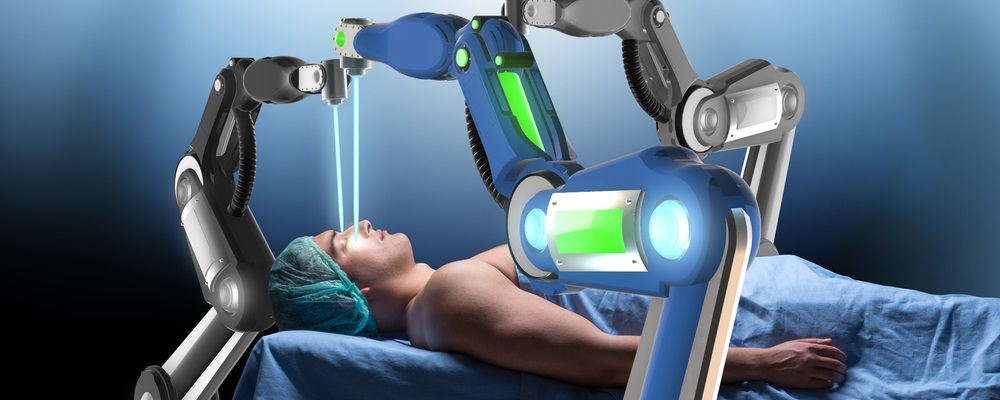In the past, we’d often see robots in movies as cruel monsters that inflict pain and destruction. The fear of robots has long been established and is still being persistent today. From the 1954 movie, Target Earth to today’s Terminator franchise, the portrayal of robots as a menace is endless. However, there are also lots of films that portray robots as misunderstood machines, treated more likely as a human.
In the movie Alita: Battle Angel, we discover how robots are seemingly blending in with medicine and the human body. Although movies are works of fiction, films like Alita: Battle Angel often are “previews” of where, how, and what our lives might lead to in the future. Realistically speaking, robots in the field of medicine today have made enormous leaps to further our understanding of the human body.
Robots and Artificial Intelligence are changing the landscapes of modern medicine. It’s no surprise that the futuristic scenes we see in movies like Alita can become a reality in a few years. To convince you further, here are some more ways that robots are helping in the field of medicine:
Advances in Prosthetics
Before, people who were amputees had prosthetics made out of almost anything attached to them. In fact, the oldest known prosthetic limb was attached to General Marcus Sergius of the ancient roman army. Fast forward to the not so distant past, prosthesis evolved and turned to more suitable material such as wood and plastic.
Fast forward again to the present day, and you’ll find amputees with highly advanced prosthetic limbs. Made out of lightweight material and other advanced components, prosthetic limbs are essentially robots that function just like a limb. Due to these advances, an amputee has a broader range of articulate movements available, just like a healthy arm or leg would have.
Not only do prosthetics restore a person’s ROM or range of movement, but advanced prosthetic limbs also enable an amputee to feel. This is a leapfrog for innovation as amputees feel more normal than in the past. With the addition of bionic skins that look and feel more human, man and machine’s unification isn’t so far off in the future.
Endoscopy Bot
Doctors would use a small camera shaped like a pill or capsule to look at the stomach and intestines of people. These pill-like cameras were only limited to water and peristalsis moving them. Today, endoscopy bots are becoming a reality and helping doctors understand more about the gut of the human body.
Now, these robots are more slender and even smaller. They also have mechanisms that allow doctors to use them like remote-controlled cars to “drive” towards a section or part in the stomach or intestines.
Exoskeletons
As mentioned earlier, lots of films inspire scientists to enhance the field of robotics further. An example of these films is the Iron Man franchise. Iron man features the hero wearing advanced exoskeletons to do heroic feats. Although we’re far off Tony Stark’s achievements, there are simple exoskeletons that are already making tasks for people relatively easy.
These exoskeletons greatly enhance the lifting capabilities of a normal human being. They also help people who have paralysis to walk and move again. Sites like robots.net often chronicle these significant achievements for everyone to see. With ample time and research, exoskeletons and iron suits will link up with prosthetics and create more advances in the field.
Nanotechnology
Nanotechnology or Nanotech for short is the usage of molecular level robots to do tasks on the anatomical level. Although the innovation is still in its early stages, these robots are already in existence and can be seen through a microscope.
Currently, these nanobots only have tasks related to delivering drugs to specific parts of the human body. Some can also be made to target and eliminate cancer cells specifically. In the future, these nanobots will be able to recreate, restore, and develop limbs and even whole organs for patients.
Companion bots
Not all things in the world of medicine have to do with the physical aspect of the human body. Mental health is also part of the field, and the world of robotics is also creating ways to help. A lot of people often suffer from depression and loneliness. In fact, a lot of patients aged 80 and above lack the affection of a human being.
Companion bots are now slowly emerging and providing company to our elders. Dubbed as the “emotional robot,” Buddy the robot has lots of features that cater to seniors such as facial recognition, physical interaction, and it even displays emotions. Although nothing can replace real human interaction and affection, these companion bots are the next best thing.
Takeaway
The field of robotics is paving the way for an advanced future, especially in the field of medicine. Innovations such as prosthetics, nanotechnology, and even companion bots are making strides to help us improve our understanding of the human body.
An example of the possibilities with medical robots includes: delivering drugs to a more specific part of the body(faster delivery, faster reaction to the drug), improved range of motion for amputees, and companion bots providing emotional support to their patients.




